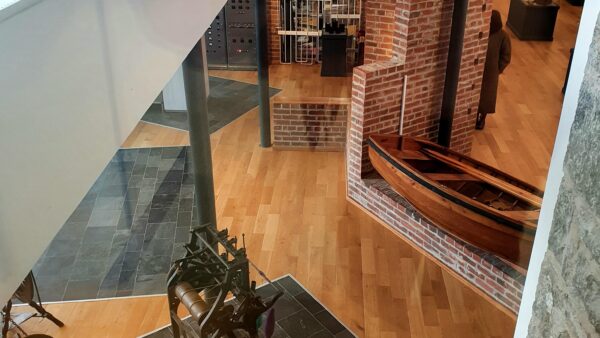
Seinn Spioradail: Sacred Soundscapes of the Highlands and Islands
Museum nan Eilean Stornoway
20th January – 12th April 2024
On tour from Dr Frances Wilkins, Elphinstone Institute, University of Aberdeen.
Learn more about sacred song traditions of the region and explore sound recordings, film, objects, and a digital archive, soundmap and interactive virtual tour.

Dr Frances Wilkins, a Senior Lecturer in Ethnomusicology at the Elphinstone Institute, University of Aberdeen, has spent the last six years undertaking fieldwork in the West Highlands and Western Isles and exploring sacred and spiritual singing from the region.
She has been compiling and recording Gaelic song traditions, including hymnody, Gaelic psalmody and spiritual bàrdachd which are diminishing in Hebridean communities.
Dr Wilkins said: “In past centuries the Church played an important role in nurturing Gaelic language when it was excluded from schools.
“Today, ironically, the roles have been reversed. Gaelic and English bilingualism which in the past was given little or no credit, is now recognised as hugely beneficial to learning across the school curriculum but there are very few church services conducted in Gaelic, and this has contributed to a steep decline in the Gaelic sacred singing tradition.’
To help support the safeguarding of the tradition Dr Wilkins has been documenting and recording Gaelic sacred and spiritual singing to create an archive and bring the music to a wider audience.

Many of the sound recordings, photographs and videos made during the project form the basis of a website and online digital archive (at www.seinn.org), developed in partnership with the Open Virtual Worlds team at St Andrews University. A CD and book publication showcasing some of the sound recordings is due to be released later in 2024 and sold within the exhibition.
Dr Wilkins adds: “Language is a way to express culture. The deep spiritual connection it has with its people and the role which music plays in this, must be recognised and supported into the future if we are to keep some of the most precious aspects of Gaelic culture alive.”
She goes on to say, “Doing the research in the Hebrides was an incredible experience. I have met so many inspiring people and am very grateful to everyone who has been involved and helped me with the project. I am pleased that my research and its publication is playing a part in the preservation of these unique song traditions.”
“I will be at the opening and look forward to returning to Lewis and meeting some of the project’s contributors again. It will be wonderful to have singers who were involved in the project at the exhibition opening.”
“The exhibition would not be possible without financial support from the British Academy, Carnegie Trust, and Bòrd na Gàidhlig, and the support and valuable input of staff at Museum and Tasglann nan Eilean in Stornoway.”
The exhibition is at Museum nan Eilean in Stornoway from 20th January – 12th April 2024 before touring Highland and island communities including Balallan (Lewis) from April – June 2024, Portree (Skye) from June – November 2024, and Lochmaddy (N.Uist) from December 2024 – February 2025.


